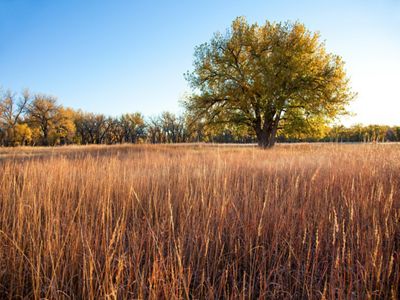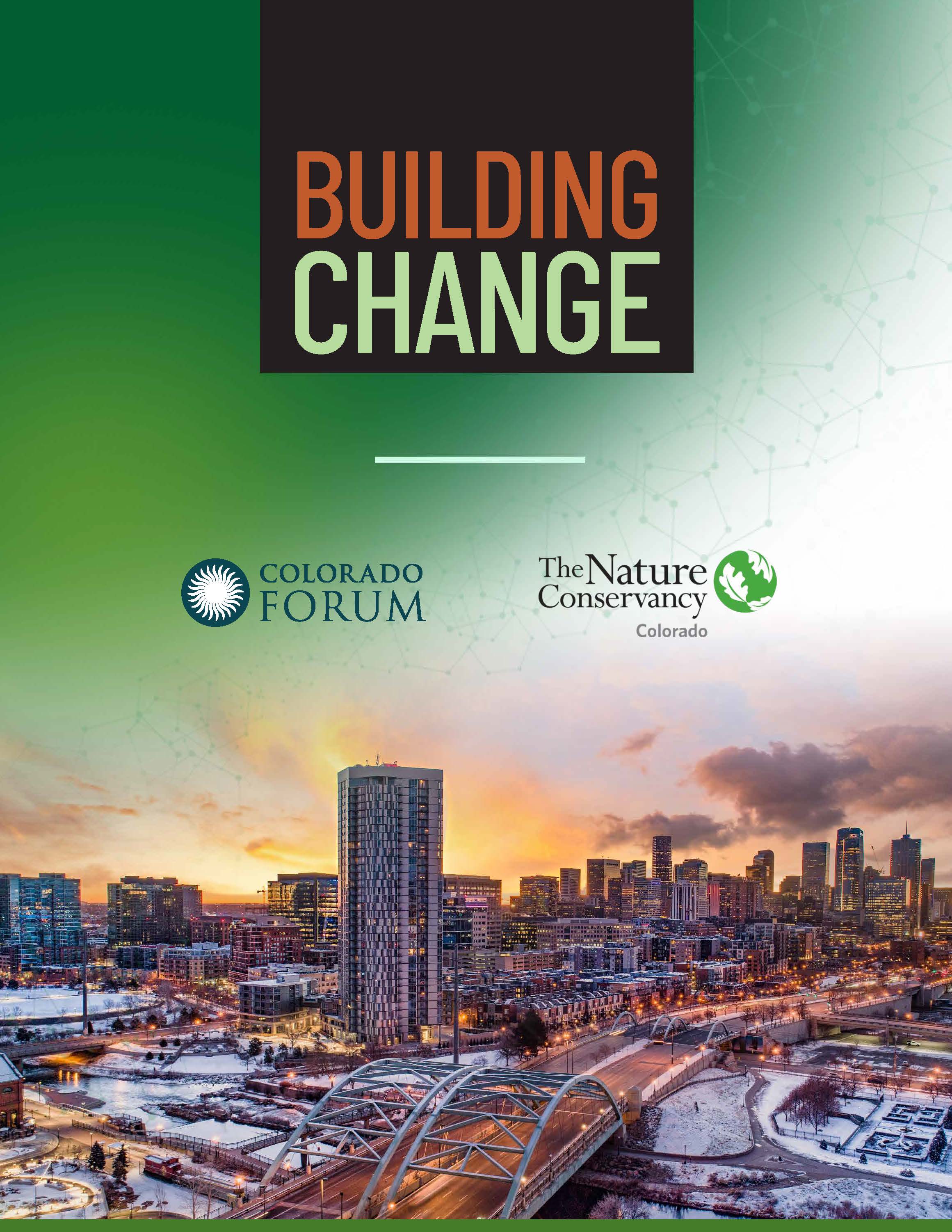We are at a turning point for our climate. The past three years have been hotter than any other time in recorded history. Even with unprecedented levels of public concern, we’re not seeing change at the pace and scale we need today to avoid a climate crisis in the future. That’s why The Nature Conservancy is taking a deliberate approach in all 50 states to accelerate climate action now.
The impacts of climate change include more extreme weather, natural disasters and chronic drought. In the face of these growing threats, we are working to combat climate change on multiple fronts in Colorado. We are fostering key partnerships, advancing state policies and using nature to store carbon.
Climate Policy
By engaging business leaders, community leaders, and elected officials, TNC is working in all 50 states to implement policies that reduce greenhouse gas emissions. As Washington, D.C. remains slow to act, states like Colorado are leading the way for innovative climate solutions.
The Nature Conservancy has been actively participating in the development of a Greenhouse Gas Pollution Reduction Roadmap for Colorado, which is being led by Governor Polis' administration and multiple state agencies. The Roadmap will chart a path to achieve Colorado's science-based carbon reduction goals. To help move this effort forward, we’ve held roundtables with businesses and partnered with Protect Our Winters, Ceres and over 25 Colorado businesses to write a letter in support of the state’s climate goals and roadmap. Additionally, The Nature Conservancy has submitted public comments on the latest draft of the Roadmap, helping to shape Colorado's climate future.
In 2019, we supported a successful bill to set some of the most ambitious goals in the country for cutting greenhouse gas pollution. The Climate Action Plan sets goals for Colorado to reduce greenhouse gas pollution 50 percent by 2030 and 90 percent by 2050, compared with 2005 levels.
Following the adoption of this bill in 2019, today we are working with a broad coalition to implement the Climate Action Plan and further advance policies to address the major sources of Colorado’s greenhouse gas pollution.

Natural Climate Solutions
Natural climate solutions leverage forests, grasslands, wetlands, and soils to capture and reduce greenhouse-gas emissions. Natural climate solutions have enormous potential for helping to mitigate the effects of climate change.
Research led by TNC shows that at a global level, natural climate solutions can provide up to 37 percent of the emission reductions needed by 2030 to keep global temperature rise under 2°C. In Colorado, we’re studying the role natural climate solutions can play in contributing to the state’s ambitious greenhouse gas pollution reduction goals, and we’re testing natural climate solutions that bring benefits to people and wildlife.
Protecting grasslands from conversion is one of the best ways to keep carbon in the soil and out of the atmosphere. Through land protection and working with ranchers to advance sustainable grazing practices, we are maintaining a carbon sink and conserving habitat.
Other effective natural climate solutions include restoring wetlands, replanting forests that have burned in severe wildfires, planting aspen trees in targeted areas, and keeping forests healthy to prevent catastrophic wildfires in the future.
Building Partnerships
We are working with industry leaders from the health, business and outdoor recreation sectors to move the needle on climate action in Colorado. This work helps us to build a broad and diverse coalition of support for climate action and to make it a key concern for industry leaders.
Climate action will require broad-based, bipartisan collaboration from both the public and private sectors. The Nature Conservancy has taken steps to work with Colorado businesses, like Alterra, Odell Brewing Co., and Smartwool, to advance sustainability efforts and strategies. Our partnership with Vail Resorts and their 1% for the Forest effort is another strong example. This is a beneficiary project in which one percent of revenue from Epic Discovery activities at Heavenly Mountain Resort, Vail Mountain Resort, and Breckenridge Ski Resort help fund important ecological restoration and conservation projects managed by The Nature Conservancy.
We are also partnering with the Colorado Forum, a nonpartisan group of respected business and civic leaders, to form the Healthy Colorado Initiative. This partnership will address climate change challenges and opportunities in Colorado and support attaining Colorado’s bold greenhouse gas pollution reduction goals.
Our work in cities aims to prepare for a hotter future for the people who will be most impacted by rising temperatures. In Denver, we are planting trees, partnering on regional planning, and helping make sure funds are directed toward the neighborhoods that most need more shade and trees to improve air quality. In 2019, we helped pass ballot measure 2A, which will generate nearly one billion dollars over the next 20 years for parks, rivers, trails, and trees in Denver.
High-impact partnerships, on-the-ground climate solutions, and bold new policies will move the needle for Colorado’s climate.

To move the needle and catalyze climate action, we must continue to empower and support the next generation of climate leaders. That's why we teamed up with Healthline for their 2022 Healthline Stronger Scholarship, awarding four $5,000 scholarships to students who are committed to making a difference at the intersection of health and climate change.
Green Transportation
Transportation is the leading sector in emitting greenhouse gas pollution in Colorado and is an area where emissions reductions are needed.
That's why we're partnering with the Colorado Forum, a group of business and civic leaders, to find ways to shift our transportation habits to emit less pollution.
Together, we’ve created the Healthy Colorado Initiative, an effort to engage business and civic leaders in making Colorado an exemplar in sustainability and emissions reductions. Our new Driving Change Guidebook provides ideas and inspiration to businesses to promote green mobility, or transportation options that reduce emissions. With sections on telework, green commuting, electric vehicles, cycling and more, the Driving Change Guidebook aims to be a reference for both businesses and commuters.
Driving alone is still the dominant mode of transportation for more than 85% of U.S. commuters and approximately 75% of Denver commuters. Driving Change “focuses on transportation options that reduce emissions, such as public transportation, carpooling, cycling, walking, driving hybrid or electric vehicles, and telework.”
Change is needed in the next decade to curb climate change. “We are seeing the effects of climate change in Colorado from ongoing drought to catastrophic wildfires,” explains Carlos Fernandez, state director for TNC in Colorado. “The Guidebook offers specific recommendations to enable Coloradans to decrease emissions from transportation to help put us all on a more sustainable path forward.”
Businesses can be part of that change by incentivizing and influencing travel behavior of their employees. Studies show that flexible commuting options help employers attract and retain the best talent.
“We have heard from many Colorado businesses looking for ways, as they re-open, to establish a ‘new normal’ that is better for their employees, their businesses, and the planet,” says Gail Klapper, president of the Colorado Forum.
We only have a short time left to act so that we avoid the worst effects of climate change around the world. Businesses have the opportunity and the responsibility to take action now. Finding ways for our transportation choices to be greener is an important step in curbing emissions today.
Download
Green Buildings
Within the Healthy Colorado Initiative, we are also working to improve public health and climate change resiliency by focusing on the built environment. Building operations are responsible for 28% of Colorado's carbon emissions; Coloradans must immediately focus on decarbonizing buildings. We created the Building Change Guidebook to outline and amplify clear solutions for buildings to achieve a cleaner commercial, residential, and industrial building stock. Decarbonizing buildings catalyzes pollution reduction, creates more durable infrastructure, provides healthier indoor air quality, saves money, and more.


